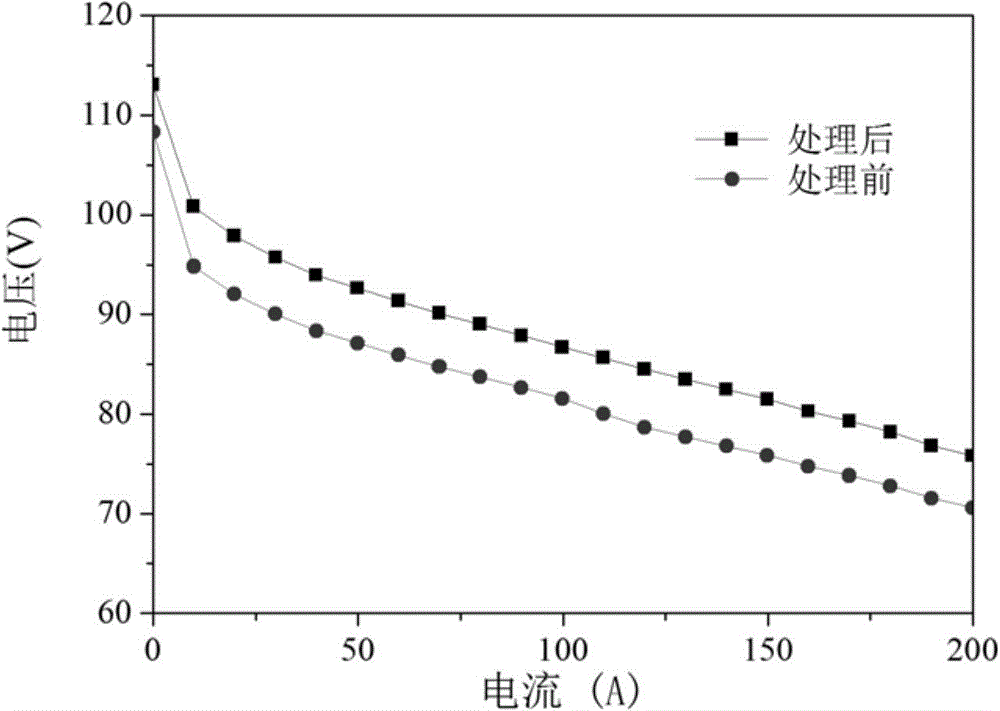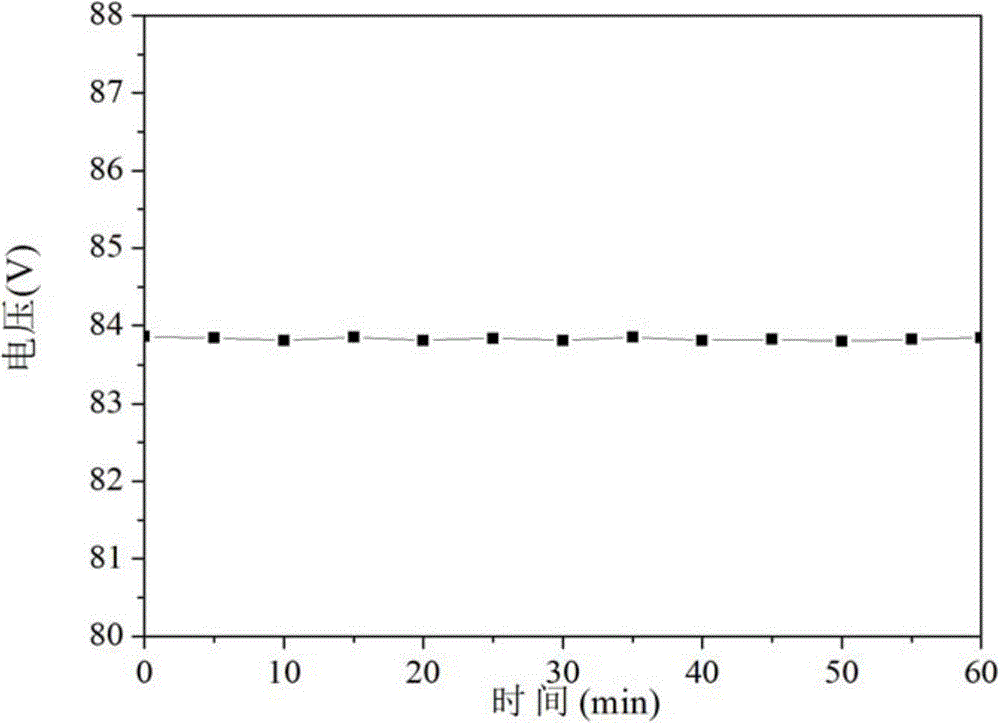A method for recovering the performance of low-efficiency membrane electrodes in proton exchange membrane fuel cells
A proton exchange membrane, fuel cell technology, applied in fuel cells, fuel cell additives, circuits, etc., can solve problems such as limited functions and poor practicability, and achieve the effects of strong practicability, recovery performance, and uniform dispersion.
- Summary
- Abstract
- Description
- Claims
- Application Information
AI Technical Summary
Problems solved by technology
Method used
Image
Examples
Embodiment 1
[0029] Select the electric stack with severe performance degradation of a single battery in the backup power supply (fuel cell backup power supply), and test the voltage-current curve of the battery, see figure 1 shown. Connect N to the stack 2 For purging, input 60°C deionized water into the cooling fluid channel of the stack, use deionized water to raise the temperature of the stack to 60°C, and the cathode (air channel) and anode (hydrogen channel) are respectively fed with saturated humidification air and H without humidification 2 , use the load to load the current to the stack, according to the interval of 10A as a step, the current is gradually loaded from the open circuit to 200A, the duration of each current is 0.5 minutes, continue to load the current to 350A, the duration of each current For 2-6 minutes, quickly reduce the load current to the open circuit state, and the current is loaded twice from low-high-low cycle, and the active area of the battery is 250cm ...
Embodiment 2
[0031] The 110-cell stack of backup power supply with attenuated performance is processed, and the difference from Embodiment 1 is that the circulating current is loaded 4 times. The voltage-current curves of the stack before and after treatment are shown in figure 2 shown.
[0032] The treated stack is operated at a constant current at a rated current of 130A, monitor the change of the stack voltage with time, and record the voltage-time curve, see image 3 shown.
Embodiment 3
[0034] Use the low-high-low circulating current method to deal with the 50-cell stack of backup power supply with attenuated performance. The voltage-current curves of the stack before and after treatment are shown in Figure 4 shown.
[0035] The above-mentioned embodiments are only three cases, and the present invention is not limited to these cases. It can be seen from the examples that after the standby power supply has been running for a long time, the overall performance of the single battery or the stack in the stack will be attenuated. At this time, the method of loading low-high-low cycle current can restore the performance of the membrane electrode. Performance and good stability prolong the service life of the stack.
PUM
 Login to View More
Login to View More Abstract
Description
Claims
Application Information
 Login to View More
Login to View More - R&D
- Intellectual Property
- Life Sciences
- Materials
- Tech Scout
- Unparalleled Data Quality
- Higher Quality Content
- 60% Fewer Hallucinations
Browse by: Latest US Patents, China's latest patents, Technical Efficacy Thesaurus, Application Domain, Technology Topic, Popular Technical Reports.
© 2025 PatSnap. All rights reserved.Legal|Privacy policy|Modern Slavery Act Transparency Statement|Sitemap|About US| Contact US: help@patsnap.com



